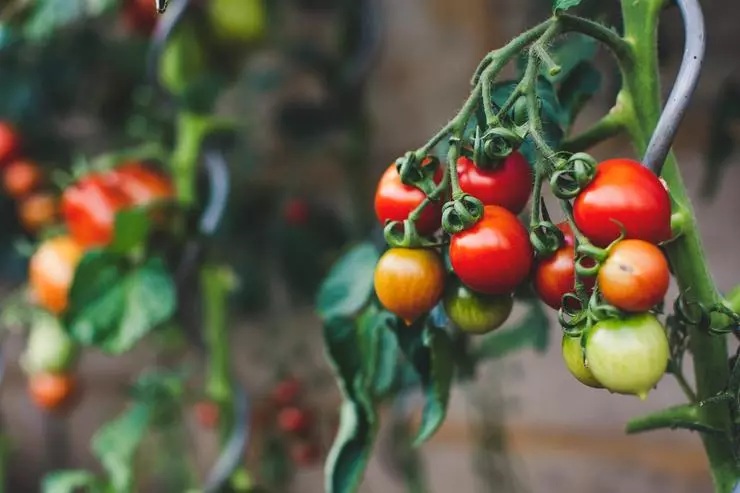The demand for organic products over the past two decades has grown in geometric progression. For example, the Americans spent more than $ 26 billion on organic products in 2010 compared to one billion in 1990, according to the report "Associations of Organic Produce Consumption with SocioConomic Status and The Local Food Environment: Multi-Ethnic Study of Atherosclerosis (Mesa)" . One of the main problems causing the desire to consume the body is the fear of the harmful effects of pesticides. Every year, the Working Group on Environmental Protection (EWG) publishes a "dirty dozen" - a list of 12 inorganic fruits and vegetables with the greatest content of pesticide residues. This article lists the latest Dirty Dozen products and explain simple ways to reduce the effects of pesticides.

When choosing products, many will prefer "Eco"
Photo: unsplash.com.
What is a list of dirty dozen?
Since 1995, EWG publishes a "dirty dozen" - a list of fruits and vegetables grown in the traditional way, with the greatest content of pesticide residues. Pesticides are substances commonly used in agriculture to protect crops from damage caused by insects, weeds and diseases. To compile a list of "dirty dozen", EWG analyzes more than 38,000 samples taken by USDA and FDA to highlight the most serious "criminals".
Many experts argue that the constant impact of pesticides - even in small doses - may eventually accumulate in the body and lead to chronic diseases. In addition, there are concerns that the safety limits set by regulatory authorities do not take into account health risks associated with the simultaneous use of more than one pesticide. For these reasons, EWG has created a "dirty dozen" list as a guide for people who want to limit the impact of pesticides for themselves and their family.
List of dirty dozen products 2018:
Strawberry: An ordinary strawberry invariably heads a "dirty dozen" list. In 2018, EWG found that one third of all strawberry samples contained ten or more residues of pesticides.
Spinach: 97% of spinach samples contain residues of pesticides, including permethrin, neurotoxic insecticide, which is very toxic for animals.
Nectarines: The remains of almost 94% of nectarine samples were detected, and one sample contained more than 15 different residues of pesticides.
Apples: Pesticide residues are found in 90% of apples samples. Moreover, 80% of tested apples contained traces of diphenylamine - pesticide prohibited in Europe.
Grapes: It is one of the main products in the "Dirty dozen" list, more than 96% of the samples give positive results to the residues of pesticides.
Peaches: more than 99% of peaches tested by EWG, contained on average four pesticide residues.
Cherry: In the samples of Cherry, the average five residues of pesticides were found, including a pesticide prohibited in Europe called ipodion.
Pears: More than 50% pears contained five or more pesticides residues.
Tomatoes: on tomatoes grown in the traditional way, four residues of pesticides were found. One sample contained more than 15 different residues of pesticides.

Even in vegetables there are harmful connections.
Photo: unsplash.com.
Celery: Pesticide residues were detected in more than 95% celery samples. 13 different types of pesticides were discovered.
Potatoes: Potato samples contained more residues of pesticides by weight than any other tested culture. Chlorprofam, herbicide, was the main part of the detected pesticides.
Sweet Bulgarian pepper: it contains less residues of pesticides compared to other fruits and vegetables. Nevertheless, EWG warns that pesticides used to treat sweet bell peppers, "tend to be more toxic to human health."
Of course, the data given will be more relevant for the United States, where this study was conducted. However, for our country, statistics are most likely similar. For this reason, many families have brought a nitrateometer - a device with which you can make sure that food safety.
